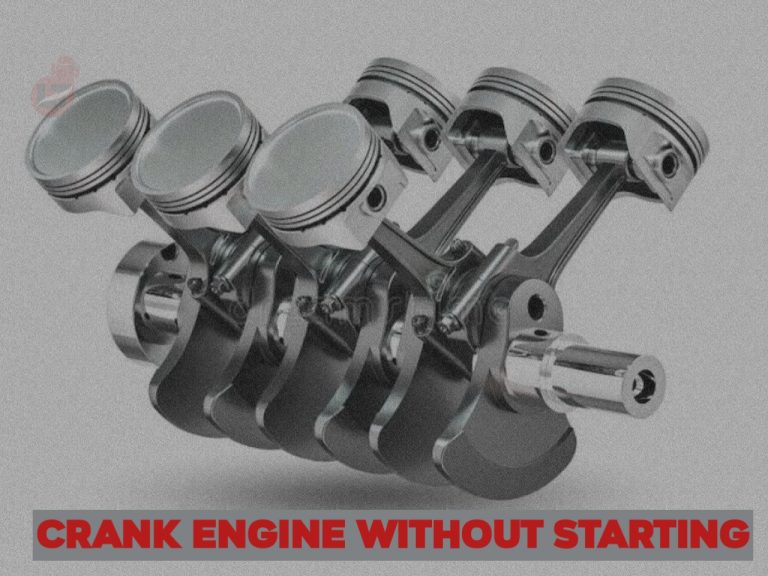Cranking the engine without starting is a procedure every car owner must carry out after a complete oil change.
This helps reduce the effect of wear and tear in the engine because the new oil has yet to circulate to other engine components.
This scenario can also be known as “Dry Starting,” which can be avoided by cranking the engine so the oil pump can circulate oil at low pressure before the start-up.
Cranking the engine without starting is also advised if your car has been parked idle for an extended period and would like to stir up settled oil in the engine. Also, cranking is very important when you’ve got an Engine rebuild or port to a new cylinder head to allow fluid to circulate into the bearing and oil filters.
Continue reading as we show you the automatic and manual ways of cranking your engine without starting.
How to Crank Engine Without Starting
There are three ways to Crank an Engine without starting it—one is manually using the hand, while the other is through the starter.
It’s not always necessary to crank your engine before starting it, but car owners who’ve had their cars parked for a long time got a complete oil change or did a total engine replacement should ensure to crank their engine to avoid dry starting.
It helps circulate and lubricate the freshly admitted oil into necessary components before the engine starts.
How to Automatically Crank Engine Without Starting
This technique works well for those people using automatic cars with the start button embedded.
Although the process will cause a small amount of wear on your starter and battery, you don’t have to panic since it’s a once-in-a-blue-moon action.
- Compress and hold the throttle pedal to the floor
- Insert the key into the ignition
- Now, press and hold the engine START button
- Release the START button when the oil pressure lamp turns off, say 6 seconds.
- You can now start your engine.
As specified in the article, don’t compress the starter and gas pedal for too long to avoid the risk of overheating and wear.
Once you notice the oil gauge light is turned off, it implies that the oil has circulated into the newly installed oil filter (remember to change your oil filter on every oil change)
That’s it.
How to Manually Crank an Engine
This manual technique is for those who don’t have the starter button on their car but can get into their engine.
Manual cranking involves disconnecting the fuel injector fuses from the engine to cut power from reaching the fuel injector.
Most cars have two injector fuses attached to both sides of the engine, and they are easy to find and detach.
- Now, proceed to start your engine using the key to send a signal to your starter.
- The starter will try to start the combustion cycle, but due to the presence of the injector fuses, it’ll only crank the engine.
- The fuel injector aids in sending fuel into the engine; since it’s absent, it won’t start the engine.
- Also, ensure that you do this for a short period, given 6 minutes, to avoid overheating your starter.
- You can reconnect the fuel injector fuses once the oil has been circulated into the engine system.
- Start your engine and warm your car.
How to Hand Crank an Engine
For hand cranking an engine, you’ll need access to the ratchet wrench and enough strength to rotate it.
Hand cranking an Engine isn’t often necessary except when the engine component stops responding and you want to replace it by rotating the component to a specific position, e.g., timing belt and valve stem seal.
- Start by getting a ratchet wrench tool
- Locate the crankshaft bolt and size the wrench to fit
- Rotate the bolt in a clockwise direction using your hands.
That’s it.
Also, you can fasten the power steering pump belt, then rotate the bolt in front of the pump to crank the engine.
However, if you’re going for the second-hand cranking technique, it’s advised that you take your spark plugs off your car before anything.
FAQs
What Could Cause Normal Cranking Without Starting?
No fuel supply input to aid combustion is the primary cause of a car cranking without starting. If you notice this on your vehicle, it’s time to check your fuel injector, fuel pump, coolant sensor, and fuel source.
Can crank an engine damage it?
Cranking an Engine for too long can cause overheating on the starter, damaging its performance over time.
Short cranks on an Engine won’t cause any damage to your engine; instead, they’ll help circulate oil to the oil filter and bearings.
How long can you leave a car without starting it?
You can leave a car without starting it for about 2 to 4 weeks. However, it’s advised to crank it before starting the engine to avoid wear and tear due to relaxed oil or a dead car battery.
Conclusion
Cranking is very relevant to a car that has been parked idle for a long time, the one that just got an oil change, and the one that you just ported the engine.
This allows oil flow into critical systems, preventing dry starting and improving engine life.
This article discusses the automatic, manual, and local ways to crank an engine without starting it.
How helpful was this post?
As an Amazon Service LLC Program Associate, V. Auto Basics earns from qualifying purchases. See Our Affiliate disclaimer.
